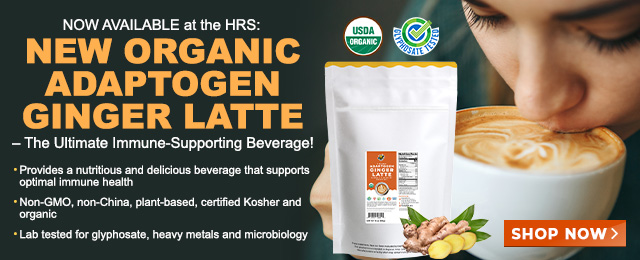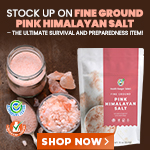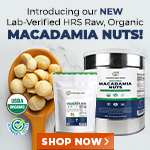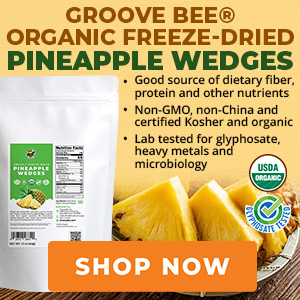
Pharmaceuticals are in your fish
Friday, June 17, 2011 by: Susan Lynn Peterson
Tags: fish, pharmaceuticals, health news
- Newly released JFK files reveal Pentagon's role in creating Lyme disease and covid in the same lab
- Here are TEN all-natural ways to protect your garden without using harmful chemicals
- Ginseng's hidden anti-aging power: How compound K is rewriting the rules of skincare
- “Endgame: The Hidden Agenda 21” unveils a world of conspiracy and control
- L.A.'s rebuilding nightmare: Only 4 permits issued after fire destroys 6,000 homes
- Scientists demand FDA withdraw mRNA COVID vaccines amid contamination and gene therapy concerns
- Senate Democrats deny censorship industrial complex existed, defend government's role in silencing dissent
- “The shame of Minnesota”: Somali immigrants behind $250 million child nutrition fraud in largest COVID-era scam
- Former Congresswoman exposes CCP's deep infiltration of California through universities, ports, and fentanyl
- Dr. Suzanne Humphries makes bombshell appearance on Joe Rogan podcast, exposing vaccine industry deception back to POLIOMYELITIS
- Despite surge in MMR vaccination in Texas, measles outbreaks continue: Is VACCINE SHEDDING fueling the spread?
- PROCESSED TABLE SALT in foods found to fuel depression
- Chewing gum's dirty secret: How your daily habit could be flooding your body with microplastics
- BPA: The hidden hormone disruptor sabotaging your health - and how to fight back
- “Independent” anti-Russia outlet MEDUZA faces COLLAPSE as US funding dries up
- Embracing the wild: A deep dive into Jim Cobb’s “Backwoods Survival Guide”
- Nomi Prins reveals how central bankers reshaped the global economy in “Collusion”
- The hidden battle in your glass: How A1 and A2 milk could shape your health
- Newly released JFK files reveal Pentagon's role in creating Lyme disease and covid in the same lab
- Analysis: The coming economic collapse, a mass uprising and Trump's three secret weapons to halt the growing revolt
- Festive flavors: The sweet history, nutritional profile and health benefits of pecan pie
- Elon Musk: Aliens could be here on Earth RIGHT NOW
- Trump reverses course on Gaza plan, says “nobody is expelling Palestinians”
- Big Pharma's $8 Billion bribery scheme exposed: how doctors are pushed to prescribe junk science, not heal
- Boys are back in town: Trump’s patriotic alpha crew takes the wheel while toxic females ride in the backseat
- Reclaim your health: How midlife exercise reverses years of inactivity
- A lack of integrity in Academia: Harvard professor found GUILTY of fraudulent research to promote CRT theory
- Survival 101: Effective EMF blocking techniques
- EPA advisor admits the agency is funneling billions to climate groups ahead of Trump’s return to White House
- Dr. Mike Yeadon releases 15-minute testimony - WATCH - about genocidal intent of COVID “vaccines”
- 5 Simple steps to boost your brainpower: How to strengthen executive function in a distracted world
- Florida takes a stand: DeSantis proposes permanent ban on mRNA vaccine mandates
- Sugarcane extract superior to cholesterol-lowering drugs?
- Mike Adams Sermon 66: God will DESTROY ISRAEL for its wickedness
- Pilots report mysterious lights 'moving at extreme speeds' across Oregon skies
- Space war brewing? Russia threatens to destroy Starlink satellites
- EPA advisor admits the agency is funneling billions to climate groups ahead of Trump’s return to White House
- California's social media censorship law struck down: A victory for free speech or a threat to online safety?
- The Health Ranger releases “Vaccine Zombie” song and music video, using AI-animated zombies for the music video
- Dr. Mike Yeadon releases 15-minute testimony - WATCH - about genocidal intent of COVID “vaccines”
- The pandemic as a tool for INDOCTRINATION: Understanding “The Indoctrinated Brain” by Dr. Michael Nehls
- Newly released JFK files reveal Pentagon's role in creating Lyme disease and covid in the same lab
- Florida takes a stand: DeSantis proposes permanent ban on mRNA vaccine mandates
- Mike Adams releases country western hit single: Goin’ Back in Time is Comin’ Home
- Mike Adams releases music poetry sensation: A Child of God
- “Why we influenced the 2020 elections”: Facebook files reveal the coordinated effort to bury the Hunter Biden laptop story
- Unpacking the Lies That We’ve Been Fed – new song and music video released by Mike Adams, the Health Ranger
- RFK Jr. clears key hurdle: Sen. Susan Collins backs controversial HHS nominee, signaling a new era for health policy
- Mike Adams releases new song and music video: Nothing More Disgusting Than a Globalist
- Michigan sheriff announces criminal investigation into 2020 election crimes, Dominion Voting Systems
- Israeli soldiers accused of even more torture and abuse in the West Bank
- Migrants are taking advantage of recent hurricanes to scam residents and loot their homes
- House Intelligence Committee calls for the ARREST and PROSECUTION of Dr. Anthony Fauci
- Rep. Nancy Mace introduces bill to ban biological males from female facilities on federal property
- Red Cross issues warning to stop blood plasma donations from vaccinated people
- Scientists confirm: GENIUS brain function can be spontaneously unleashed in humans without any apparent cause
- EPA advisor admits the agency is funneling billions to climate groups ahead of Trump’s return to White House
- HYSSOP: What research reveals about the health benefits of this ancient holy herb
- Two containers with completed ballots fall out of truck in Florida
- Fully vaccinated about to see “tsunami” of illness and death, warns virologist
- Global leaders unite to clamp down on “misinformation” with UN-backed Cascais Declaration
- BREAKING: 2025 NDAA authorizes mandatory military draft of WOMEN across America… as Pentagon pursues global NUCLEAR war with both Russia and China at the same time
- Michael Yon warns of a ZIONIST TAKEOVER in Trump’s second administration
- BOMBSHELL: DNA testing kits are a SCAM to develop ethnic-specific bioweapons
- Ozempic and Wegovy weight loss drugs are injectable LIZARD VENOM PEPTIDES that may unleash a devastating wave of organ failure… side effects align with symptoms of SNAKE BITES
- Israeli soldiers accused of even more torture and abuse in the West Bank
- These 13 countries just signed an agreement to engineer a global FAMINE by destroying food supply
- NASA admits that climate change occurs because of changes in Earth’s solar orbit, and NOT because of SUVs and fossil fuels
- RFK Jr. clears key hurdle: Sen. Susan Collins backs controversial HHS nominee, signaling a new era for health policy
- Sermon 30: How Jesus reveals Caesar’s FAKE CURRENCY and FALSE AUTHORITY
- Coriander seeds: Ancient medicine backed by modern science
- Arizona officials claim Maricopa County needs 10-13 days to tabulate results of the election
The Problem with U.S. Fish Inspection
Of all the fish consumed in the United States, 80 percent are imported. Half of imported fish comes from fish farms. China is the largest producer, providing a quarter of the fish imported into the U.S. every year. Thailand, Canada, Indonesia, Vietnam and Ecuador also provide at least five percent each of U.S. imports. In the last six years, the FDA has inspected 1.5 percent of Chinese facilities exporting to the U.S. About .1 percent of fish are inspected on import. It is not, however, inspected for several drugs legal in China but banned in the U.S.
In other words, the vast majority of fish are uninspected. Their production is unsupervised. Consequently, fish containing residues of pharmaceuticals banned in the U.S. are almost certainly leaking through the holes in the system.
The Problem of Factory Fish
Factory fish farms have many of the same problems that factory beef feedlots have. Fish are crowded into pens. They are fed not their natural diet, but food that can be bought cheaply, soy for example. Waste builds up inside the pens or seeps into the surrounding environment. Fish become sick, infested or deformed. They die at rates that are unacceptable to the managers of the farm. The typical response is pharmaceuticals, antibiotics, vaccines and chemicals to kill parasites.
China, the United States' largest source of imported fish, is producing the most dangerous fish. China has adopted a high-density model for breeding fish, ten times denser than many other countries. According to the China Times News Group, diseases are sweeping through these fish farms that can only be treated with heavy doses of antibiotics. According to Cai Shuanghu, an associate professor at Guangdong Key Laboratory of Pathogenic Biology and Epidemiology for Aquatic Economic Animals, antibiotics lose effectiveness in this environment in about two year. After that the bacteria become resistant and fish farmers must resort to more powerful antibiotics.
European Union Inspection
The European Union deals with the problem of factory fish farming by visiting the farms, inspecting them regularly. They only allow imports from countries whose food safety laws and inspection programs are consistent with the EU's own laws. And they require that each fish sold to the EU be traceable. The European Commission Directorate General for Health and Consumers points out that spot checks of the end product does not insure quality.
While European fish are being carefully monitored from farm to plate, American fish are being grown out of sight by countries with a history of irresponsible pharmaceutical use in their factory fish farms.
What Can You Do?
First, know that if you are eating imported farmed seafood, you cannot be quite sure what you are eating. Vote with your pocketbook against farmed seafood as it is currently imported.
Second, contact the FDA. Let them know that you are watching the issue and ask them what they plan to do about it. Food and Water Watch can help you keep apprised of the issues and progress of various legislative attempts to address the issue.
GAO; Seafood Safety: FDA Needs to Improve Oversight of Imported Seafood and Better Leverage Limited Resources; April 14, 2011 http://www.gao.gov/products/GAO-11-286
Food and Water Watch; Unsustainable Approach: Factory Fish Farming; June 2011 http://documents.foodandwaterwatch.org/fish-...
Food Democracy; Check the Label: 80% of US Fish Imported, Less than 1% Inspected, Most Loaded with Antibiotics etc.; November 6, 2007
http://fooddemocracy.wordpress.com/2007/11/0...
Want China Times; Fish Farm Doping: China's Latest Health Scare; May 14, 2011 http://www.wantchinatimes.com/news-subclass-...
European Commission; EU Import Conditions for Seafood
and other fishery products http://ec.europa.eu/food/international/trade...
Seafood Watch; Seafood Recommendations; http://www.montereybayaquarium.org/cr/cr_sea...
FDA; Contact CFSAN http://www.fda.gov/AboutFDA/CentersOffices/C...
About the author
Susan Lynn Peterson is the award winning author of "Western Herbs for Martial Artists and Contact Athletes" and "Clare: A Novel." Learn more about Susan and her writing at www.susanlynnpeterson.com.Fish at FETCH.news
Get independent news alerts on natural cures, food lab tests, cannabis medicine, science, robotics, drones, privacy and more.
Take Action: Support Natural News by linking to this article from your website
Permalink to this article:
Embed article link: (copy HTML code below):
Reprinting this article:
Non-commercial use OK, cite NaturalNews.com with clickable link.
Follow Natural News on Facebook, Twitter, Google Plus, and Pinterest
Science News & Studies
Medicine News and Information
Food News & Studies
Health News & Studies
Herbs News & Information
Pollution News & Studies
Cancer News & Studies
Climate News & Studies
Survival News & Information
Gear News & Information
News covering technology, stocks, hackers, and more



"Big Tech and mainstream media are constantly trying to silence the independent voices that dare to bring you the truth about toxic food ingredients, dangerous medications and the failed, fraudulent science of the profit-driven medical establishment.
Email is one of the best ways to make sure you stay informed, without the censorship of the tech giants (Google, Apple, Facebook, Twitter, YouTube, etc.). Stay informed and you'll even likely learn information that may help save your own life."
–The Health Ranger, Mike Adams












































